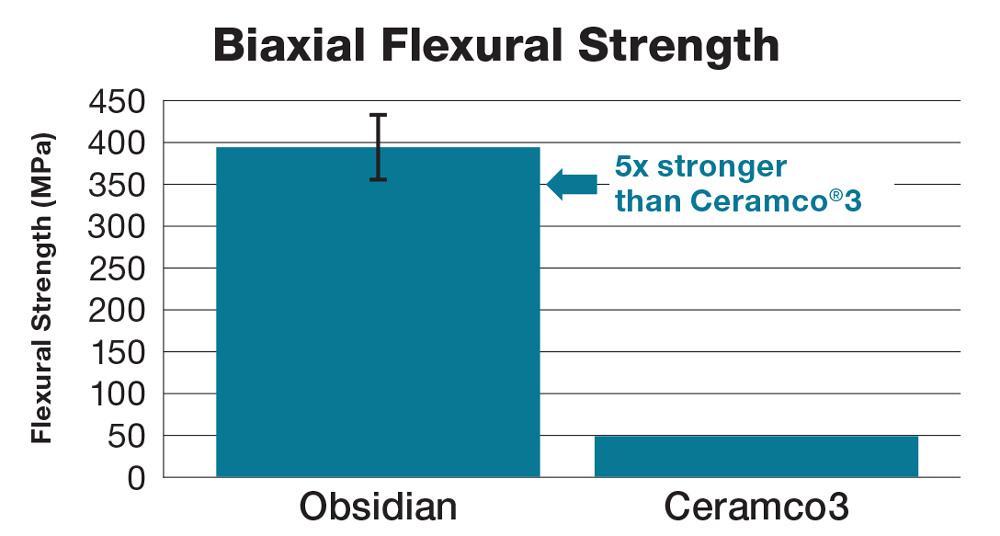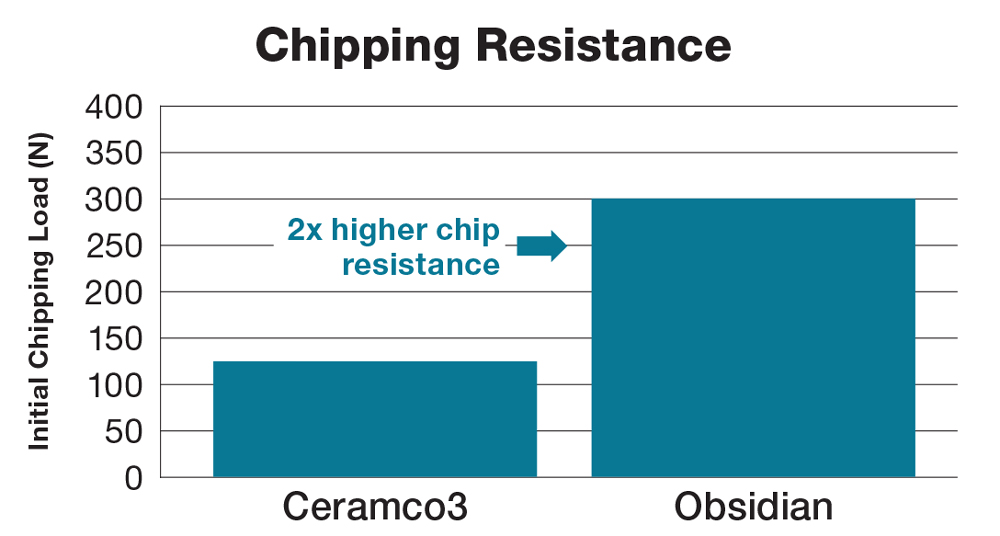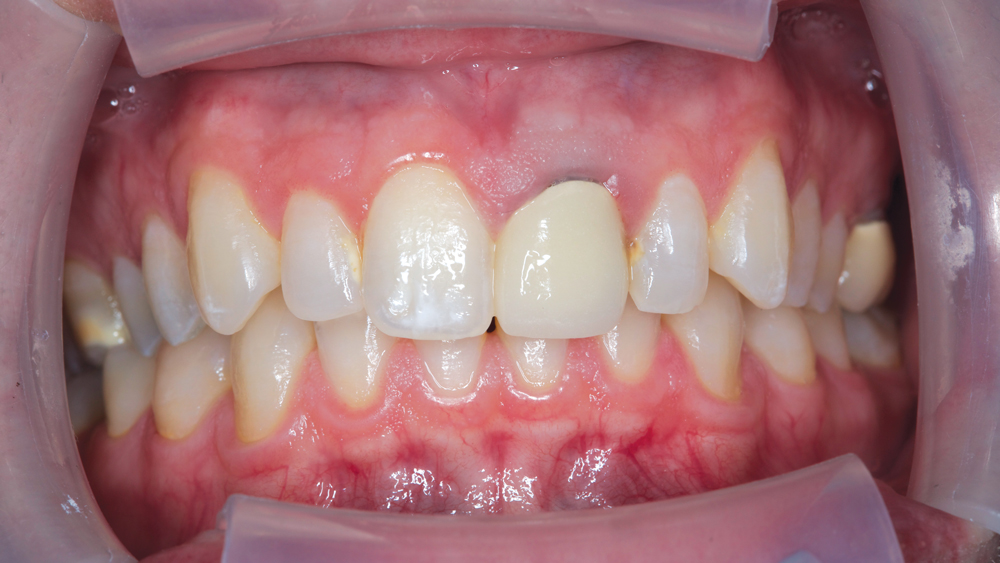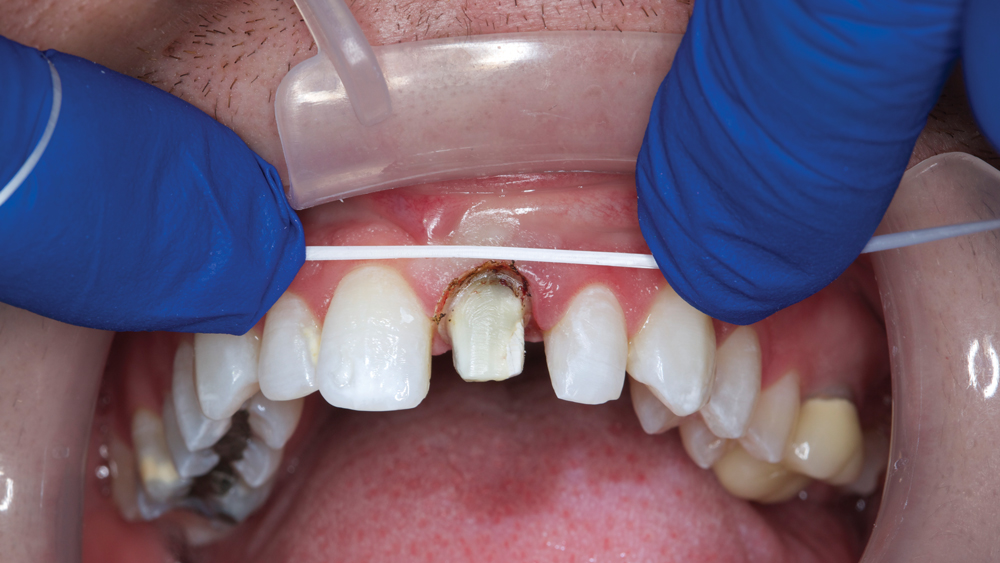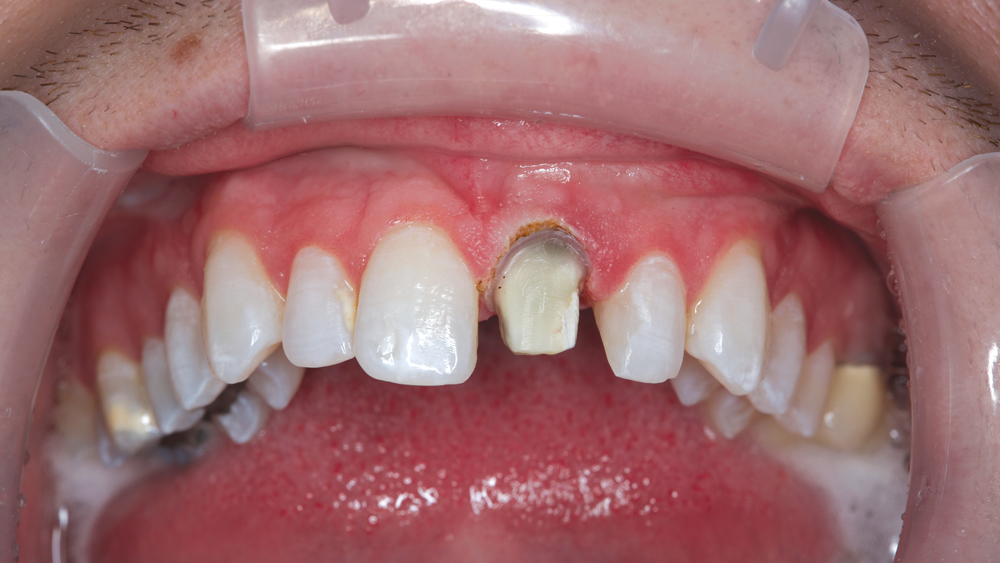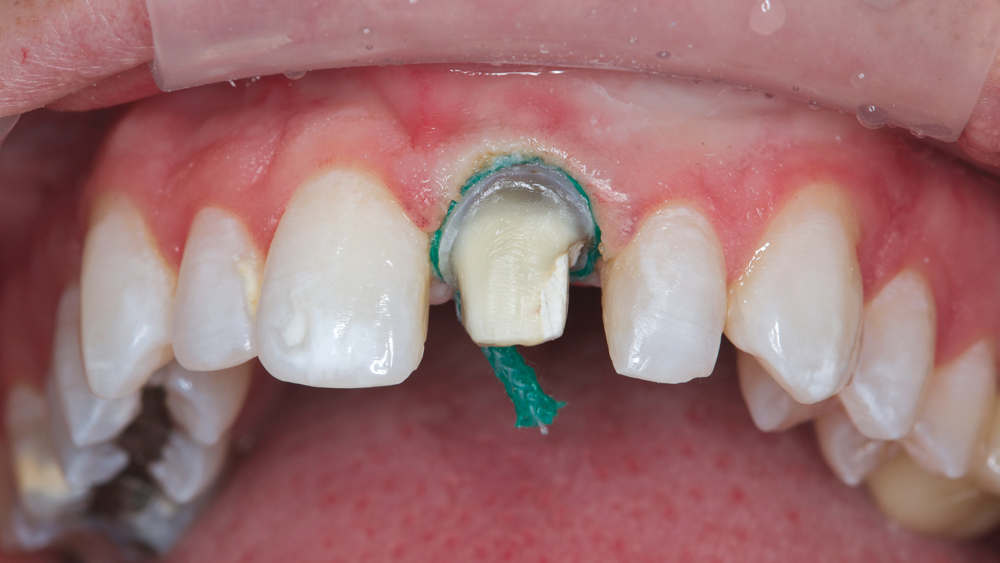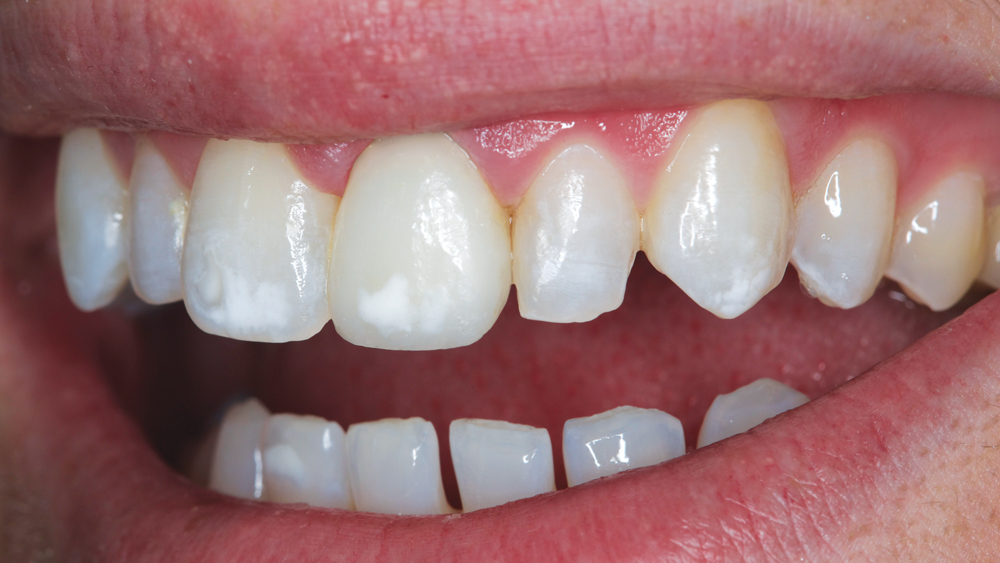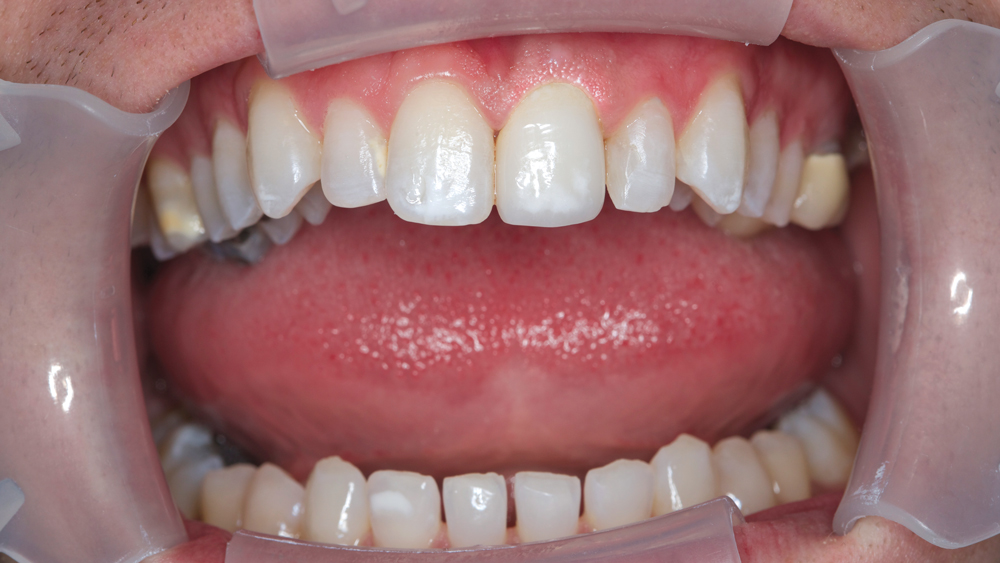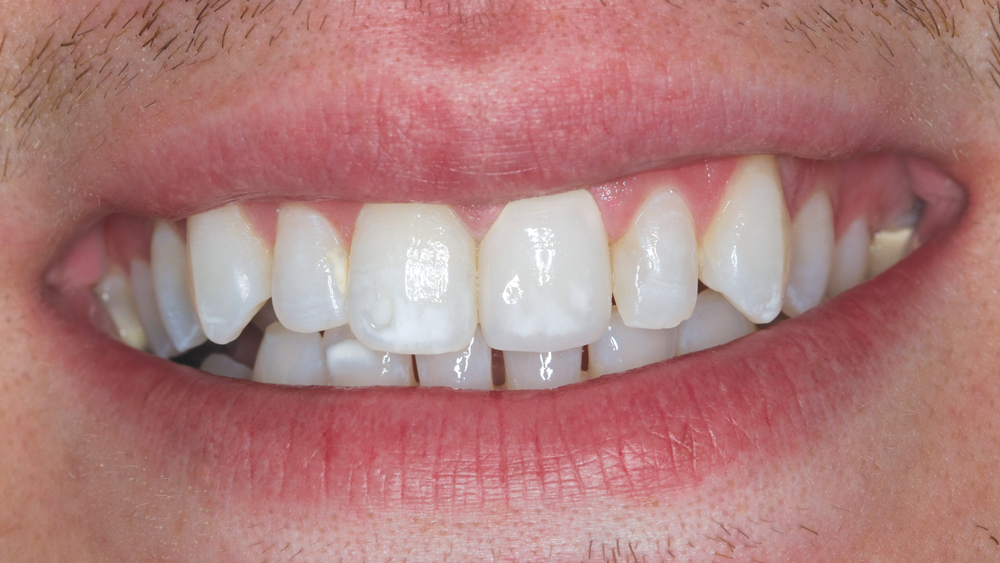Photo Essay – Central Details: Renewing a Smile with an Esthetic Obsidian® Crown
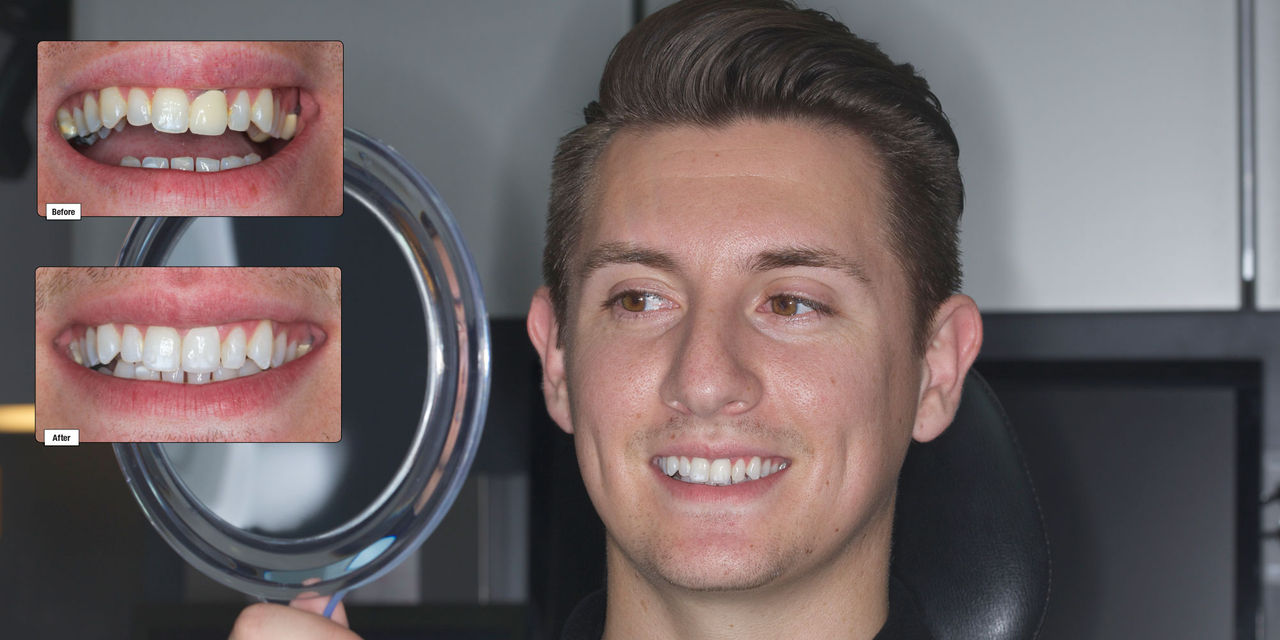
With a variety of dental materials available for crown fabrication, clinicians now have more options than ever to restore a patient’s smile. One challenging variable is to match the correct restorative material to the dentin shade of the preparation, especially in situations with a darker dentinal shade. In this case study, we will review the options available to help mask intrinsic staining of the natural tooth structure and provide an esthetic outcome for the patient.
Case Study
A 27-year-old male patient presented with a porcelain fused to metal crown on tooth #9, which had undergone endodontic treatment 10 years earlier. The patient explained that originally the cause of the treatment for this tooth was due to trauma at the age of nine. The patient reported that the tooth was neither sensitive nor altered in color following the trauma.
The crown required replacement due to recurrent decay. At the time of treatment, a darkened gingival margin, visible due to recession, posed a distinct challenge for this anterior case. In addition, the esthetics of the existing restoration were inadequate because of non-symmetric contours and poor shade match.
To achieve an optimal outcome and meet the patient’s expectations, two immediate goals were to match the gingival height of tooth #9 to that of tooth #8 and to whiten the patient’s smile. Choosing the right material for the new crown restoration was equally important. As the primary concern was to mask the dark gingival third of the root canal-treated tooth, Obsidian® Fused to Metal (Glidewell Laboratories; Newport Beach, Calif.) was chosen to satisfy the patient’s desire for esthetics as well as clinical standards for strength.
Obsidian Fused to Metal restorations put an innovative spin on PFMs, with an esthetic lithium silicate ceramic replacing the traditional porcelain. The lithium silicate ceramic maintains the translucency properties of the porcelain and is five times the strength and more than two times the chip resistance of traditional PFMs, according to recent tests (Figs. 1a, 1b).
Conclusion
Previously, a PFM was the common restorative choice for a case involving a darkened dentinal shade. Fortunately, today’s clinicians can choose from restorative materials such as Obsidian Fused to Metal to supplant and indeed outperform traditional PFMs. In this case report, the natural esthetics and improved strength of the Obsidian Fused to Metal restoration helped achieve the proper esthetic outcome as desired by the patient.



